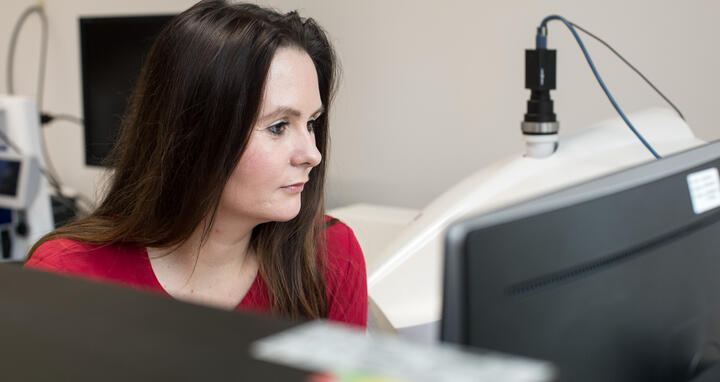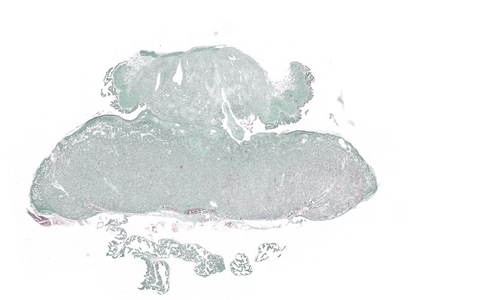Preeclampsia researcher wins award
Dr. Nadine Haase is looking for a solution to a medical problem for which currently no effective therapy exists: Preeclampsia complicates around three to five percent of all pregnancies in Western countries, with the disease usually occurring during the second trimester of pregnancy. Sudden high blood pressure and increased protein in the urine are the tell-tale signs of this pregnancy disorder, which also often leads to premature births. Preterm delivery is often the only way to save mother and child.
Histological image of a rat placenta: This image helps researchers analyze, among other things, the spiral arteries in order to gain insights into fetal nutrition.
“Even women who already suffer from high blood pressure before their pregnancy have problems with their medication. This is because all antihypertension drugs that intervene in the renin-angiotensin-aldosterone system (RAAS), which regulates water and electrolyte balance, cannot be taken during pregnancy. They are embryotoxic,” says Haase. Alternatives such as methyldopa often have only a minimal effect on preeclampsia. Haase, who is herself a mother, has since 2011 been a member of Professor Dominik Müller’s and Professor Ralf Dechend’s Hypertension-Mediated End-Organ Damage Lab at the Experimental and Clinical Research Center (ECRC), a joint institution of the Max Delbrück Center for Molecular Medicine in the Helmholtz Association (MDC) and Charité – Universitätsmedizin Berlin.
All antihypertension drugs that intervene in the renin-angiotensin-aldosterone system (RAAS), which regulates water and electrolyte balance, cannot be taken during pregnancy.
With its Hypertension Research Award, which comes with a prize of €3,000, the German Society of Nephrology (DGfN) recognizes outstanding scientists under 45 years of age who conduct research in the field of hypertension. “I feel very honored, especially since I didn’t apply for the award until the DGfN urged me to do so,” says the researcher. The award went to Haase for her preclinical studies in gestating rats in which she used small interfering RNA (siRNA) to block the synthesis of the hormone angiotensinogen, the precursor of angiotensin, in the liver. The symptoms of preeclampsia had previously been artificially induced in the maternal rats. After administering the treatment, the rats’ blood pressure dropped, the protein levels in their urine sank and their fetuses continued to grow normally.
siRNAs are ribonucleic acid molecules of only 20 to 25 base pairs in length that dock specifically onto the messenger RNA and thus prevent a particular gene from being read. This new form of treatment is not a classic gene therapy, because the gene that codes for angiotensinogen is not altered, just temporarily blocked. The therapeutic agent, which is produced by Alnylam Pharmaceuticals in Cambridge, Massachusetts, was regularly injected under the skin of the rat for this purpose.
Haase is now planning further preclinical studies on preeclampsia – also with other industry partners. “We are searching for more new therapeutic options,” she says. In addition, she wants to collaborate with partners in Norway and Austria to test the effectiveness of the drugs that have traditionally been used to treat preeclampsia. “Studies with methyldopa, for example, were last conducted in the 1980s,” Haase explains. “Among other things, we want to find out whether it still makes sense to use the drug since it has had only marginal therapeutic success thus far.” Funding for this project was provided by the European Research Area Network on Cardiovascular Diseases (ERA-CVD).
Text: Catarina Pietschmann
Further information
A potential agent for treating preeclampsia





